The choice of building materials and construction sets the longevity, beauty, and sustainability of any project. This article examines 25 of the most crucial materials in modern architecture, presenting actual applications and giving advice on the best applications.
1. Concrete
Due to its versatile quality and high strength and durability, Concrete is probably among the most used building materials wherein it provides thermal mass and reduces energy costs and flexible forms of construction.
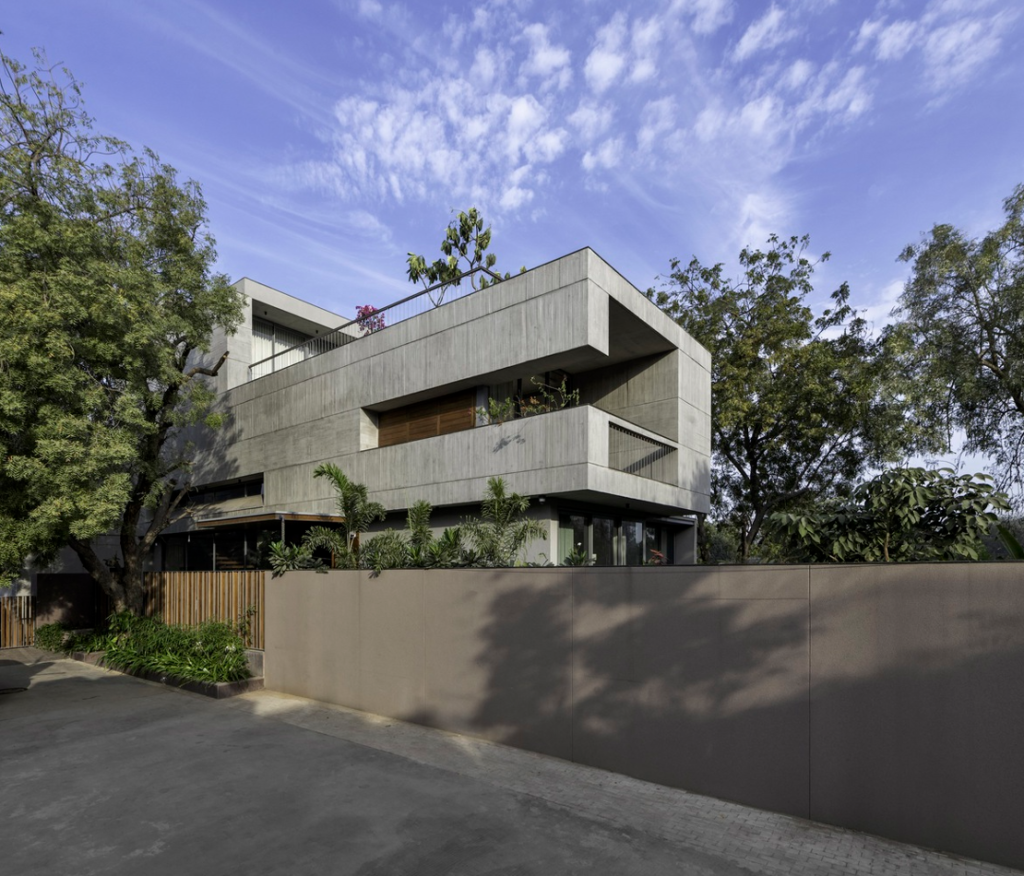
Modo Designs shows another amazing capability of concrete, that is strength blended with aesthetics. The material adds structure to a home while making it raw and typical modern aesthetics.
Best Uses:
- Ideal for modern, industrial, and minimalist projects
- Suitable for large-scale structures and residential homes
- Can be combined with glass or wood for aesthetic contrast
2. Brick
Bricks have been used for centuries due to their thermal insulation properties and natural appeal. They create breathable walls, contributing to passive cooling and a sustainable design.
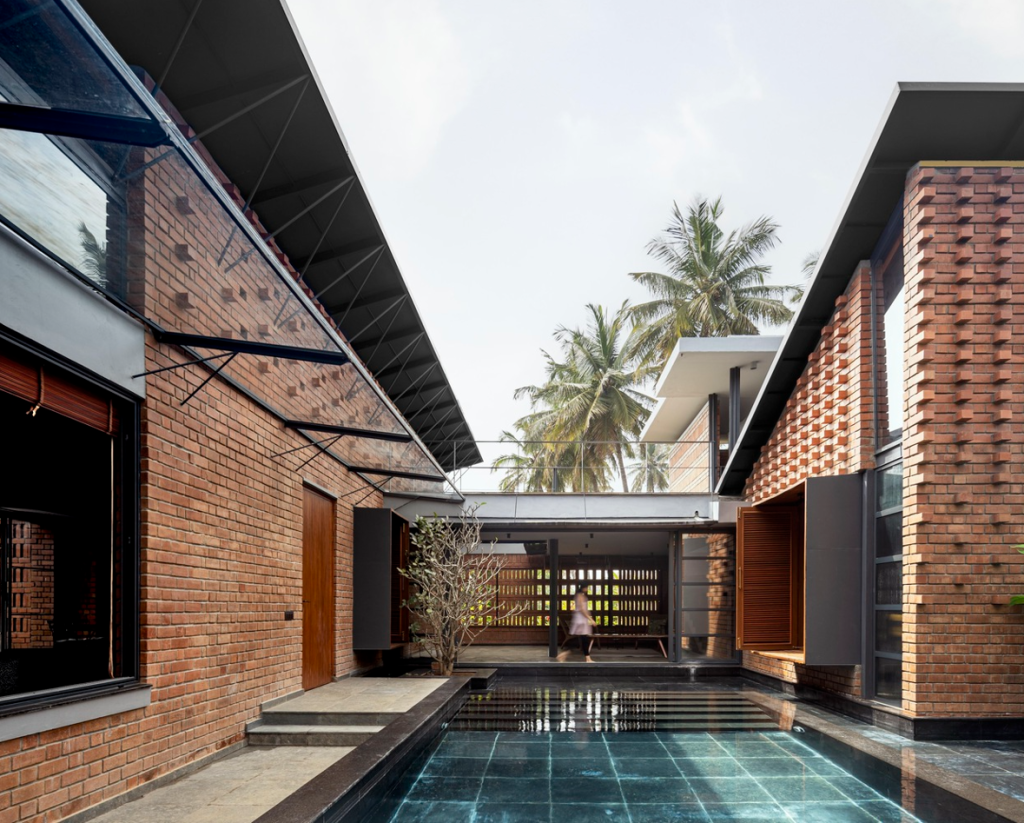
Enviarch Studio highlights how bricks create a warm, earthy aesthetic. The breathable walls contribute to passive cooling, making the structure more energy-efficient.
Best Uses:
- Sustainable and rustic-style homes
- Historical restorations and contemporary applications
- Combining with metal or wood for texture contrast
3. Wood
Wood brings warmth, flexibility, and an organic feel to interiors and exteriors. It is widely used for furniture, paneling, and structural applications.
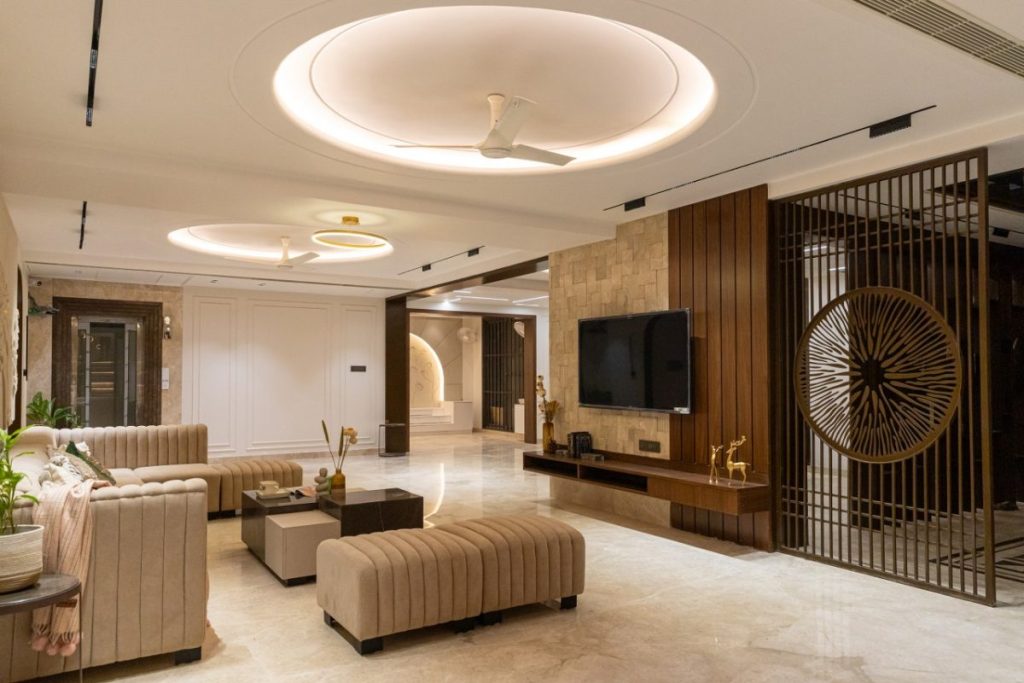
AN Architect presents wood’s ability to foster a deep connection with nature. The design incorporates wooden paneling, beams, and furniture to create a cozy atmosphere.
Best Uses:
- Interior finishes for warmth and acoustic insulation
- Timber framing in residential and commercial buildings
- Used for eco-friendly structures
4. Steel
By nature, steel has an unparalleled structural strength used in skyscrapers, bridges, and industrial buildings.

Thirdspace Architecture Studio influences steel’s robustness to create an eye-catching roof design that offers both stability and flexibility.
Best Uses:
- High-rise buildings and industrial-style homes
- Structural reinforcements and roofing systems
- Used in modern designs with glass and concrete
5. Glass
Glass helps the natural light to come inside the space, creating a sense of openness and connectivity between indoor and outdoor spaces.
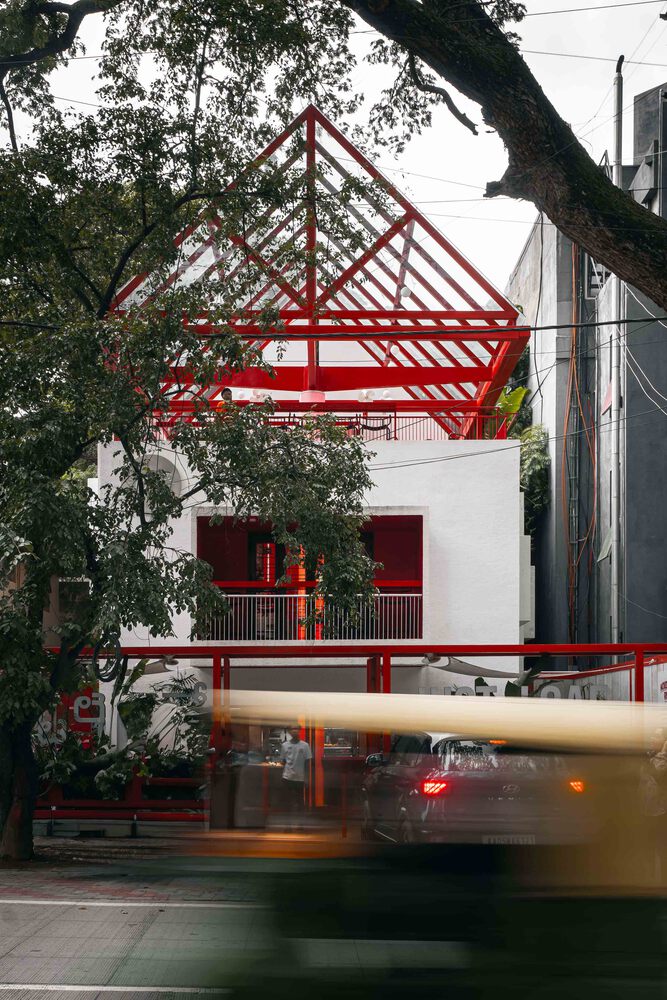
Cochin Creative Collective uses glass roofing to improve daylight penetration, creating a bright and airy space.
Best Uses:
- Energy-efficient facades and skylights
- Soundproof partitions and modern office designs
- Combining with steel or aluminum for contemporary aesthetics
6. Stone
Stone provides a sense of permanence and is highly durable. It can be used for walls, flooring, and landscaping.
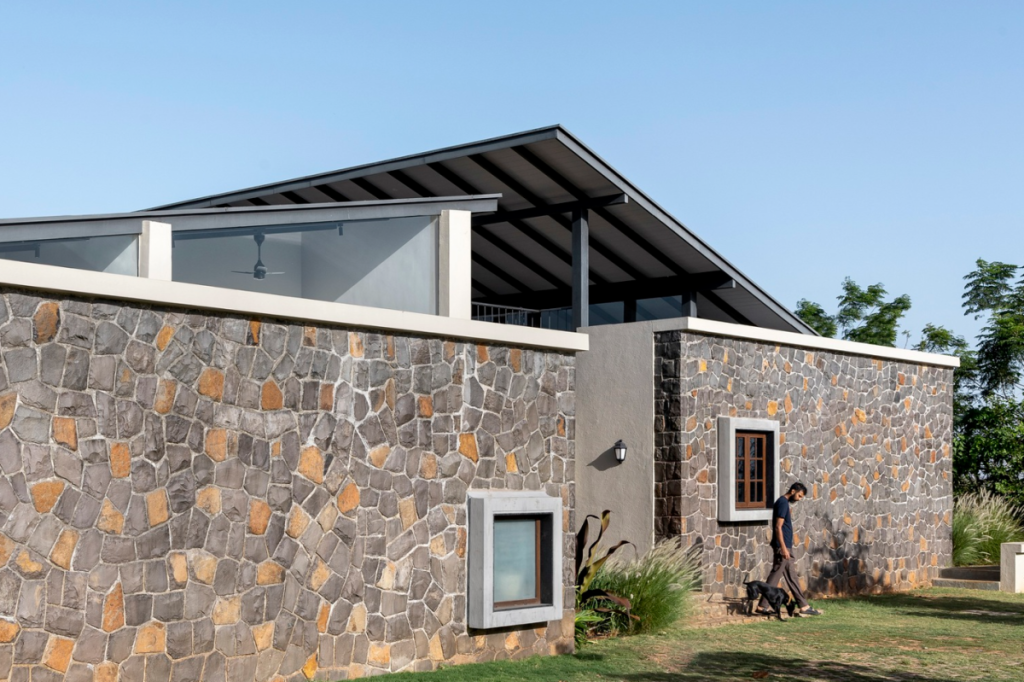
Mantis integrates stone walls into a farmhouse setting, reinforcing durability while maintaining harmony with nature.
Best Uses:
- Exterior cladding for rustic and classical architecture
- Interior flooring and feature walls
- Landscaping elements like pathways and retaining walls
7. Marble
Marble is a high-end material used in luxury homes and commercial spaces for its timeless beauty.
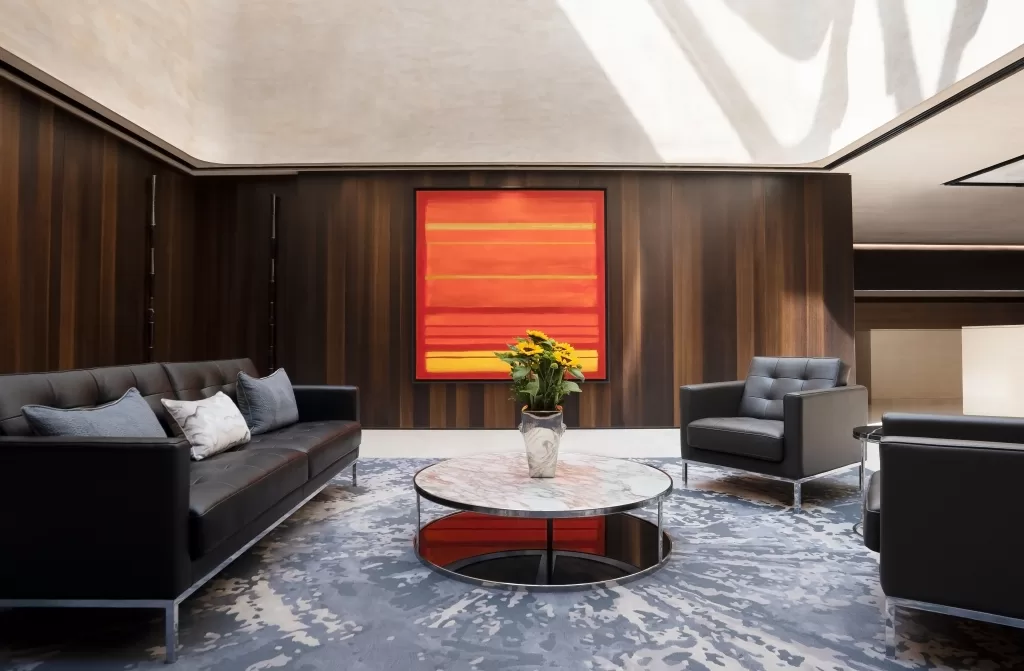
Marble Centre International exemplifies marble’s role in crafting opulent spaces with its polished texture and natural veining.
Best Uses:
- Countertops, flooring, and wall cladding
- Luxury bathroom and kitchen designs
- Statement pieces in interior decor
8. Terracotta
Terracotta is known for its earthy aesthetics, and ability to regulate temperature, thus making it sustainable for roofing and facades.

Vriksha Architects has very well demonstrated the efficiency of terracotta in tropical climates with its natural cooling properties.
Best Uses:
- Traditional and Mediterranean-style architecture
- Roofing, flooring, and decorative facades
- Low-maintenance exteriors with high thermal insulation
9. Bamboo
It is a green, quickly growing material and a sustainable resource for building construction: bamboo. It’s elastic, durable, and has the right pleasing nature.
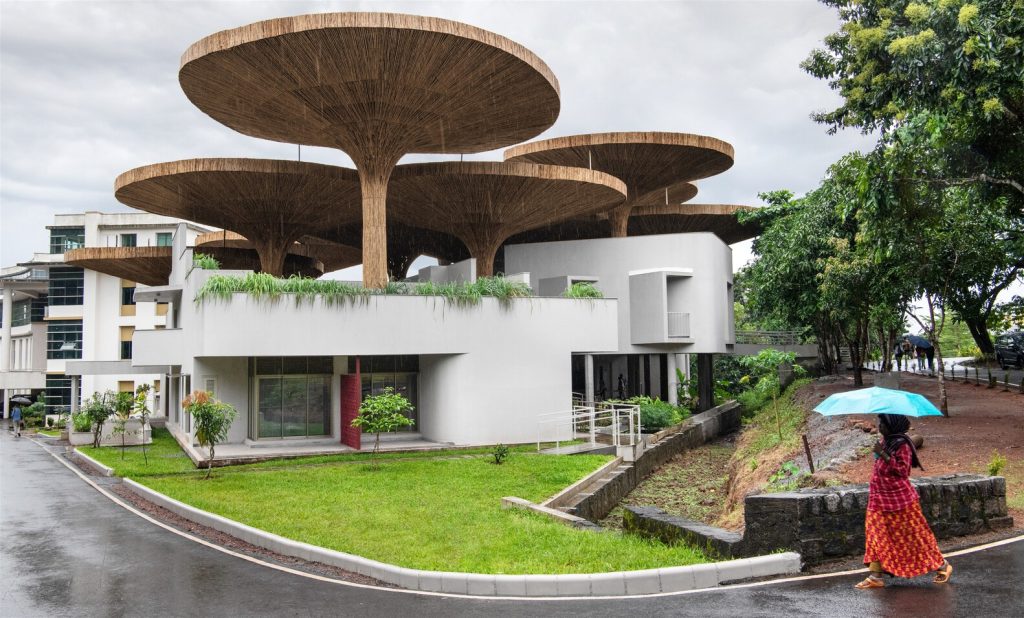
Indeed, in contemporary architecture, The Purple Ink Studio illustrates the strength of bamboo. The project implements the use of bamboo both for structural purposes, means of shading, and aesthetic detailing to realize sustainable and pleasing outcomes.
Best Uses:
- Sustainable homes and eco-resorts
- Roofing, flooring, and partitions
- Blending with other materials for a tropical or vernacular look
10. Gypsum
Gypsum is popularly employed in interior design, given its fire resistance, flexibility, and ease of installation. It is commonly utilized in drywall, ceiling treatments, and decorative moldings.
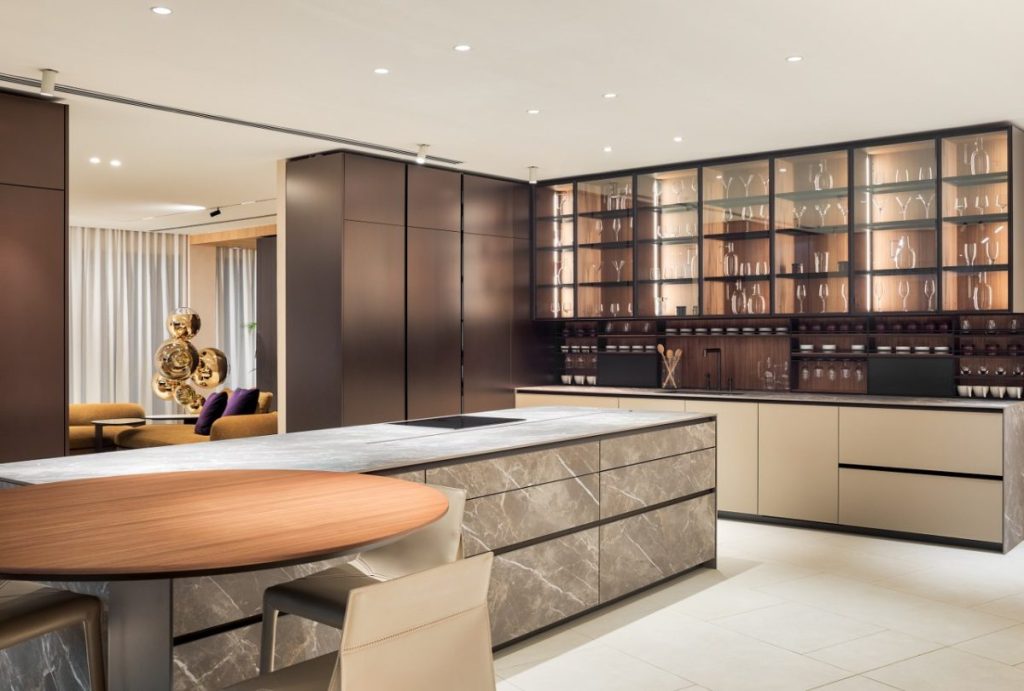
FS Designs project demonstrates gypsum’s impact on creating elegant interiors, where gypsum partitions and ceilings act to define spaces without detracting from a slick new-age vision.
Best Uses:
- Drywalls and false ceilings in residential and commercial buildings
- Intricate wall moldings and sculptural elements
- Soundproofing and insulation solutions
11. PVC
PVC (Polyvinyl Chloride) is a synthetic plastic material known for its affordability, lightweight properties, and water resistance. It is often used for doors, windows, and interior paneling.
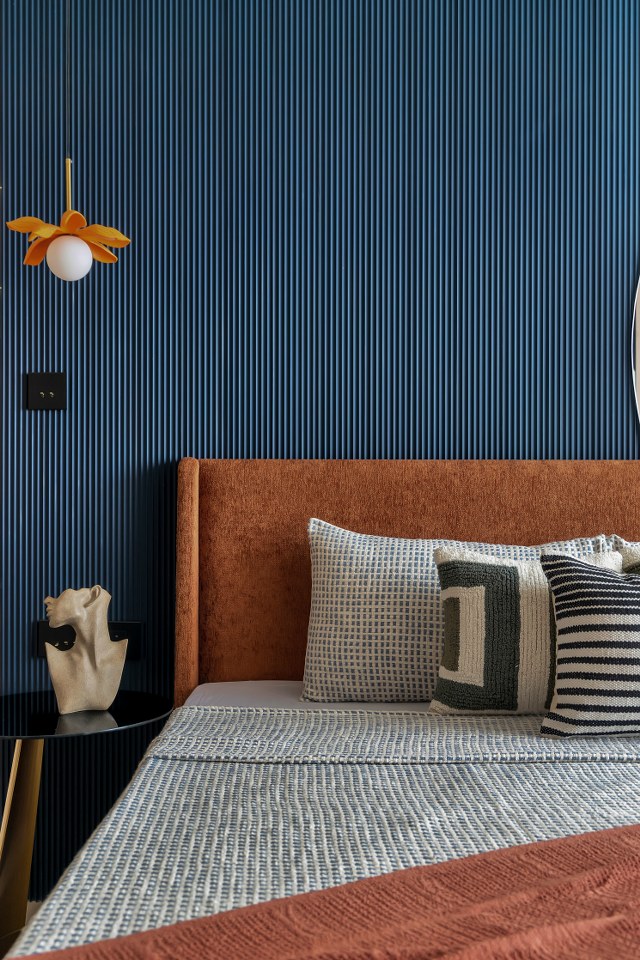
RN Deesign showcases how PVC can be used creatively for modern interiors. The project integrates PVC paneling and modular elements, providing durability with a sleek finish.
Best Uses:
- Waterproof interiors for bathrooms and kitchens
- Doors, windows, and wall cladding
- Cost-effective alternative to traditional materials
12. Aluminum
Architects like to use aluminum for contemporary cladding and structures because it is durable, doesn’t rust, and has a shiny look.
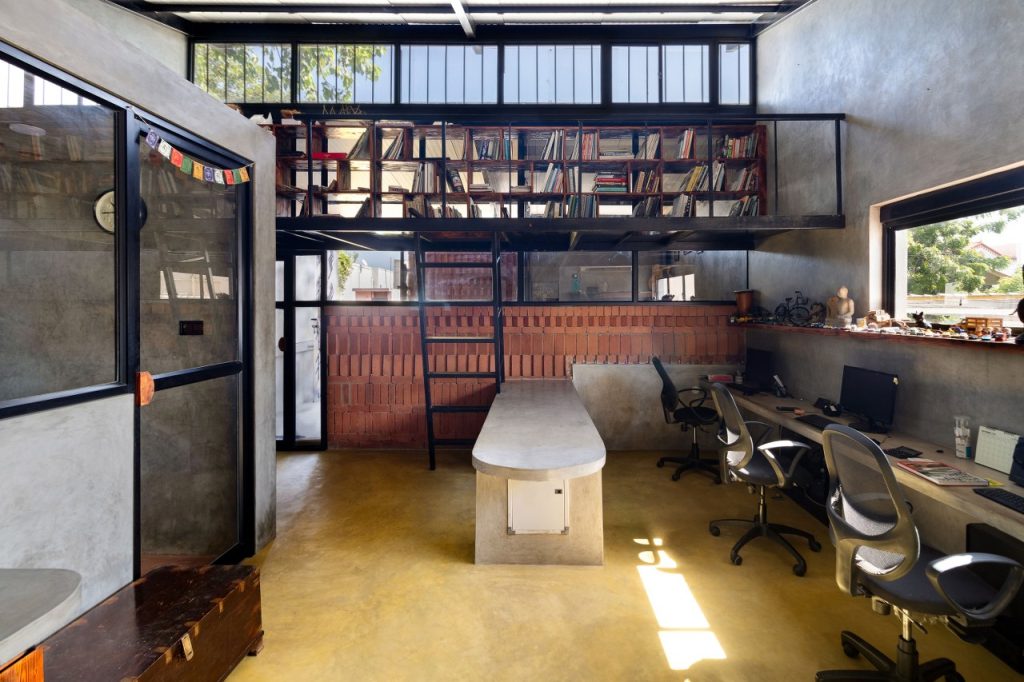
Art Architecture utilizes aluminum in its minimalist brutalist design for structural support and external cladding, thus ensuring a lightweight and durable finish.
Best Uses:
- Facades and window frames in contemporary buildings
- Lightweight structural frameworks
- Roofing and cladding in high-rise structures
13. Asphalt
Asphalt is among the most widely used materials in building materials and construction, in pavements, due to its flexibility, sturdiness, and resistance to weathering.
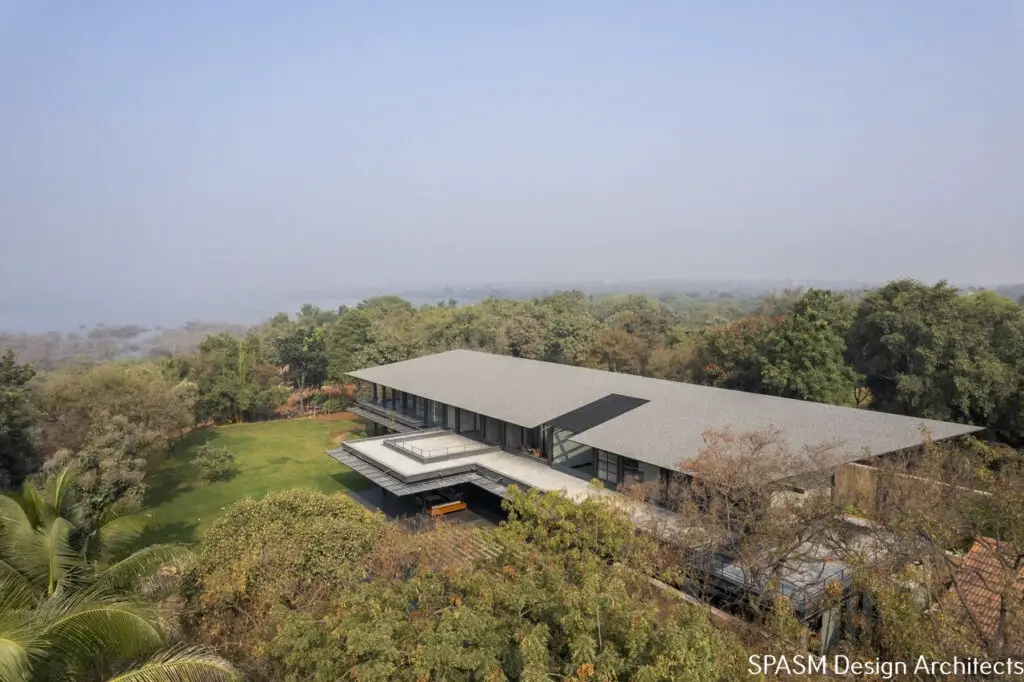
SPASM Design Architects examines how asphalt is used in roofing applications to improve durability and weather resistance in tropical climates.
Best Uses:
- Road paving for highways and driveways
- Roofing shingles for waterproofing and insulation
- Damp-proofing in basements and foundations
14. Terrazzo
Terrazzo is a composite material consisting of marble, quartz, glass, or other aggregate chips, that are poured with either cement or resin. It is a durable product with many attractive aesthetic options.
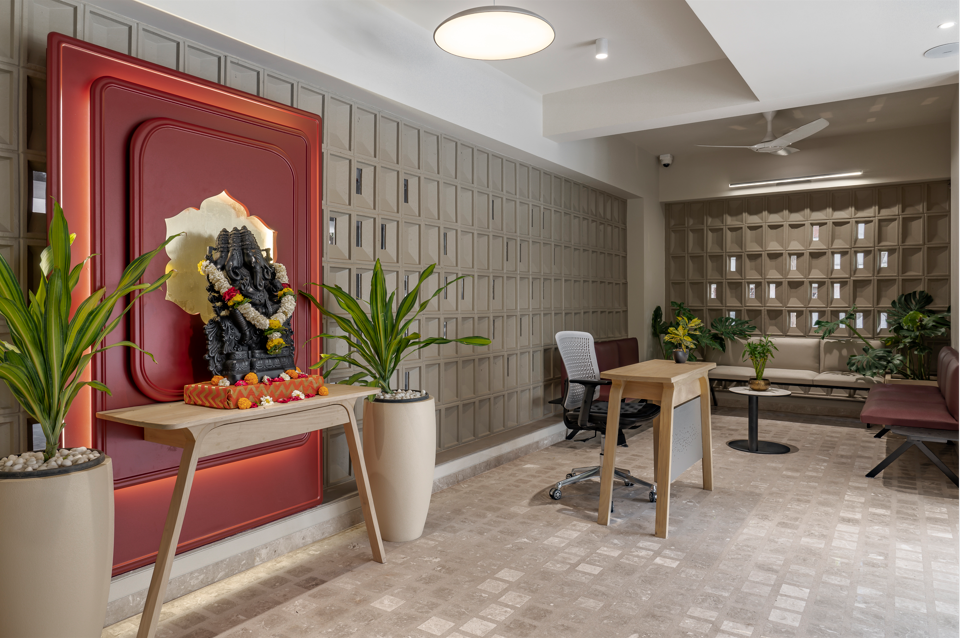
Aangan Collaborative demonstrates terrazzo’s artistic potential in flooring and walls. The material creates intricate patterns while offering durability and a polished look.
Best Uses:
- High-traffic areas such as malls and airports
- Statement flooring in luxury interiors
- Custom countertops and wall cladding
15. Rammed Earth
Rammed earth is an ancient technique where natural soil is compacted to form strong, durable walls with excellent thermal insulation.
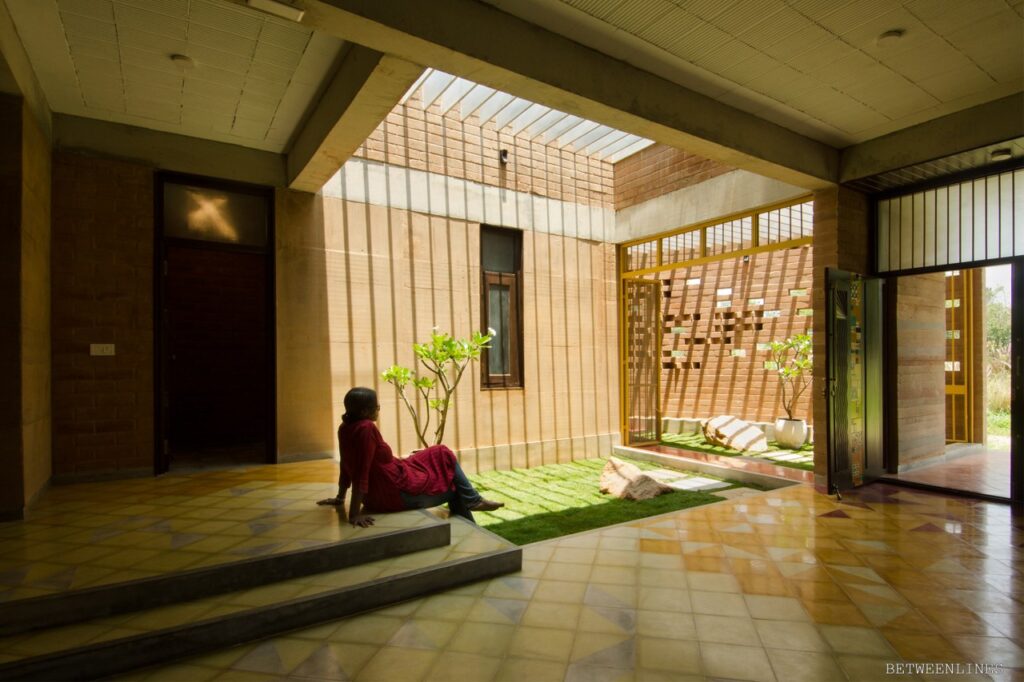
Betweenlines Studio showcases rammed earth’s sustainability. The structure utilizes locally available soil, reducing the carbon footprint while offering a warm, earthy aesthetic.
Best Uses:
- Eco-friendly homes with passive temperature regulation
- Load-bearing walls for sustainable architecture
- Aesthetic feature walls with natural textures
16. Recycled Materials
Sustainable practices are helped by factory-re-salvaged building materials and construction like reclaimed wood, glass, and metals-keeping them out of the landfills while saving energy in the process.
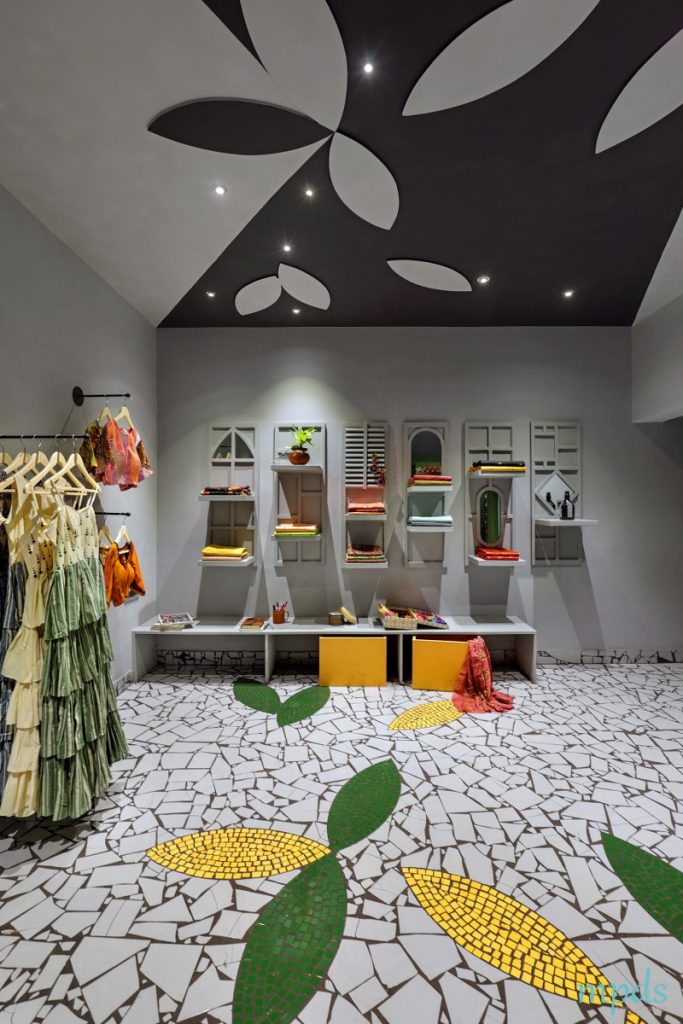
Manoj Patel Design Studio has explored the potential for recycled building materials and contruction in a boutique, and repurposed these materials in inventive ways for furniture elements, partitions, or finish details.
Best Uses:
- Green buildings and eco-conscious interior designs
- Adaptive reuse projects in urban settings
- Decorative elements made from reclaimed materials
Insulated metal panels (IMPs) provide structural strength and thermal insulation, making them ideal for industrial and commercial applications.
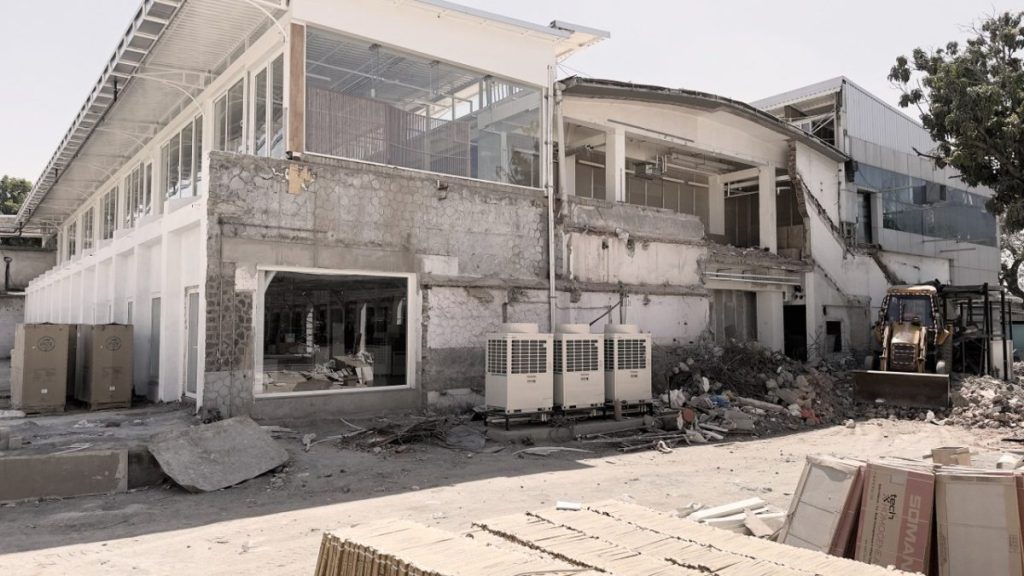
CCBA Designs incorporates insulated metal panels to improve energy efficiency in an adaptive reuse project, demonstrating their versatility in modern construction.
Best Uses:
- Industrial buildings and warehouses
- Prefabricated modular structures
- Sustainable commercial buildings requiring insulation
18. Limestone
Limestone is a durable, naturally occurring stone that provides a soft, warm aesthetic. It is widely used in facades, flooring, and landscaping.
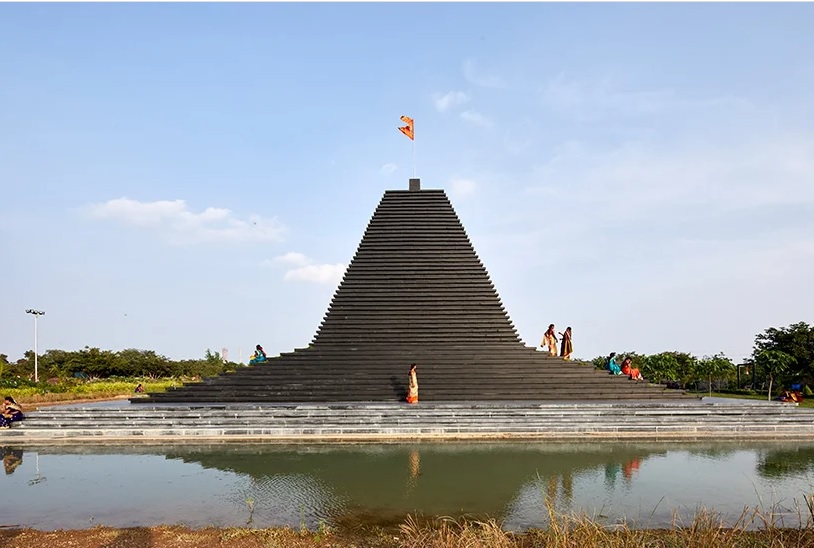
sP+a integrates black limestone into a temple design, enhancing its timeless and monumental appearance.
Best Uses:
- Classical and historical buildings
- Feature walls and accent facades
- Pathways and garden landscaping
19. Cork
Cork is a renewable material known for its soundproofing and insulating properties. It is lightweight, moisture-resistant, and biodegradable.
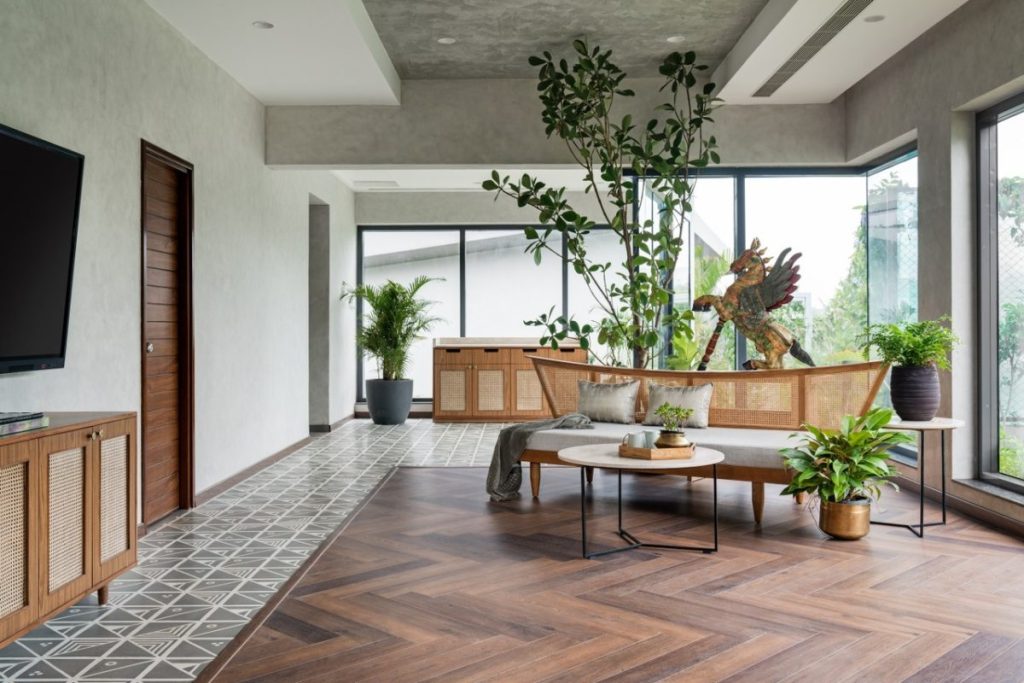
Studio GSA uses cork in office interiors to improve acoustics and sustainability. The material is applied to flooring, furniture, and wall coverings in building materials and construction.
Best Uses:
- Soundproofing in offices and home theaters
- Eco-friendly furniture and flooring
- Thermal insulation for walls and ceilings
20. Plywood
Plywood is a manufactured wood product known for its strength, flexibility, and affordability. It is commonly used in furniture, partitions, and cabinetry.

Wari Watai showcases how plywood can be creatively used in sustainable craftsmanship. The project uses plywood for modular furniture and intricate detailing.
Best Uses:
- Custom furniture and cabinetry
- Interior partitions and paneling
- Lightweight, cost-effective construction
21. Epoxy Resin
The epoxy resin features great strength, durability, and adhesive quality. They are applied both in interiors and exteriors, including coatings, countertops, and flooring. It can even be sculpted, allowing for creative, customized design.
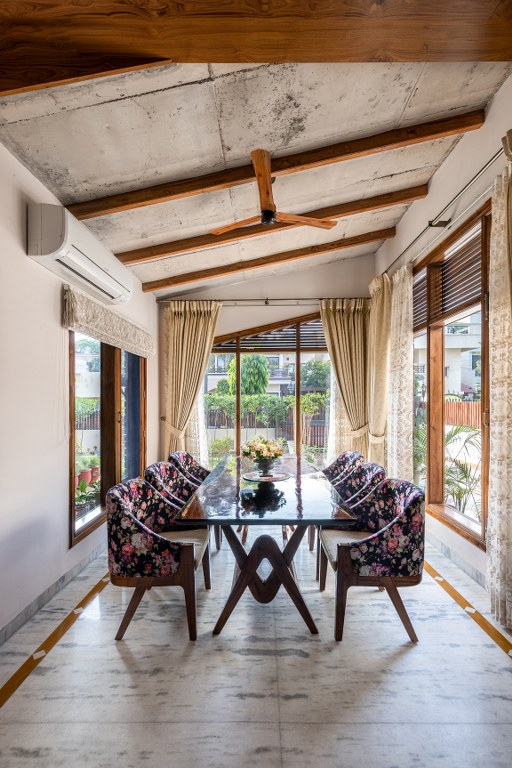
The Tapered House – Mohenjodaro Studio with the integration of epoxy resin into its design, maintains a seamless modernity, which contrasts beautifully with the rustic elements. The resin serves both functional and aesthetic purposes in its application on counters and detailing for glossy and durable finishes, further adding a subtle touch of elegance to rustic design.
Best Uses:
- Countertops, tabletops, and custom furniture pieces
- Flooring in areas requiring high durability
- Decorative elements like wall panels and artwork
22. Glass Blocks
Glass blocks are the best option for textured appearance and diffusion of natural light. These blocks filter light but still allow a space to maintain some privacy. Using glass blocks for bathrooms, partitions, or facades is smart. It has such functional-amazing purposes.
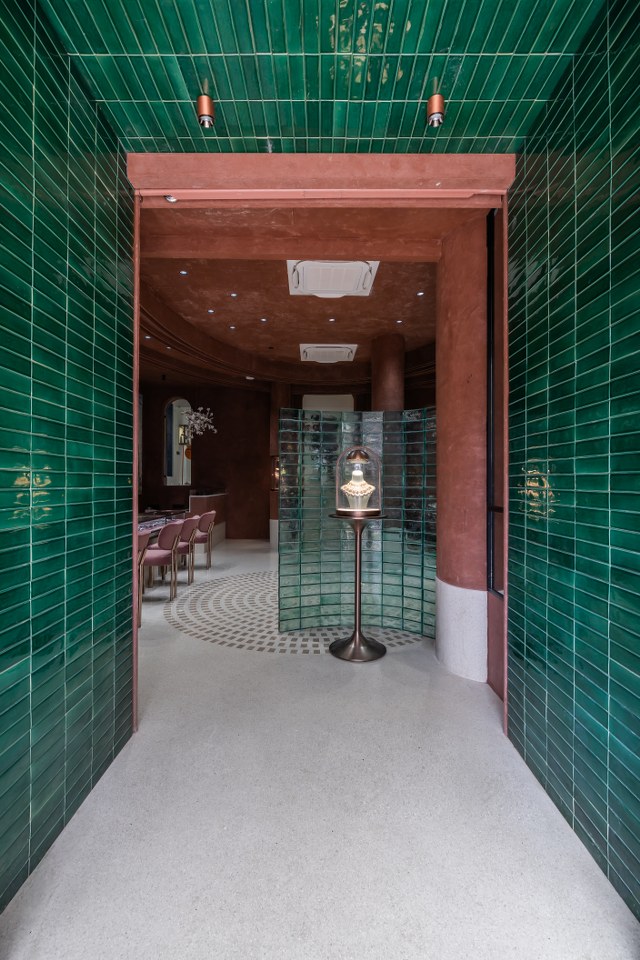
The Jewelry Store Design – Saku Lab Vimmu Design glass blocks that create an immersive and eye-catching experience. The walls of textured glass allow diffused light to cast a soft, ethereal ambiance that improves the shopping experience and showcases the jewelry in a flattering and elegant manner.
Best Uses:
- Privacy partitions in bathrooms, office spaces, and entryways
- Facades that require light diffusion without compromising privacy
- Creative wall features in commercial and residential interiors
23. Tensile Fabric
Tensile fabric is a very flexible and light material for structural applications, such as on canopies, roofing, and facades. It is well known for resisting environmental conditions while manipulating its aesthetic with dynamic forms.
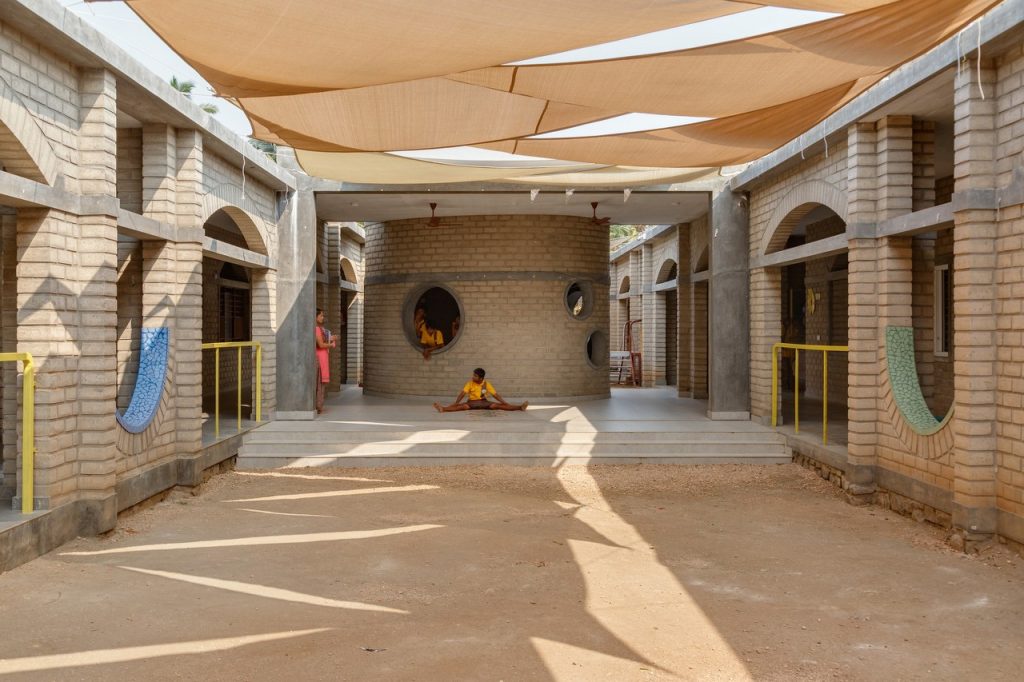
Biome Environmental Solutions uses tensile roofs in its design for effective and durable shelters while ensuring a minimum reduction in energy consumption of the building. The fabric promotes natural ventilation and cooling, which aligns with the environmental philosophy of the school and inspires a creative learning space for students.
Best Uses:
- Lightweight roofing systems for outdoor structures, stadiums, and schools
- Canopies and shading systems in public spaces and parks
- Flexible, customizable structures for temporary installations or event spaces
24. ZERO Chemicals or Artificial Materials
Designing with natural materials and eschewing all chemicals and artificial substances has gained ground, especially for eco-conscious and health-focused projects. This design philosophy brings human beings into connectedness with the environment and helps in reducing indoor air pollution.
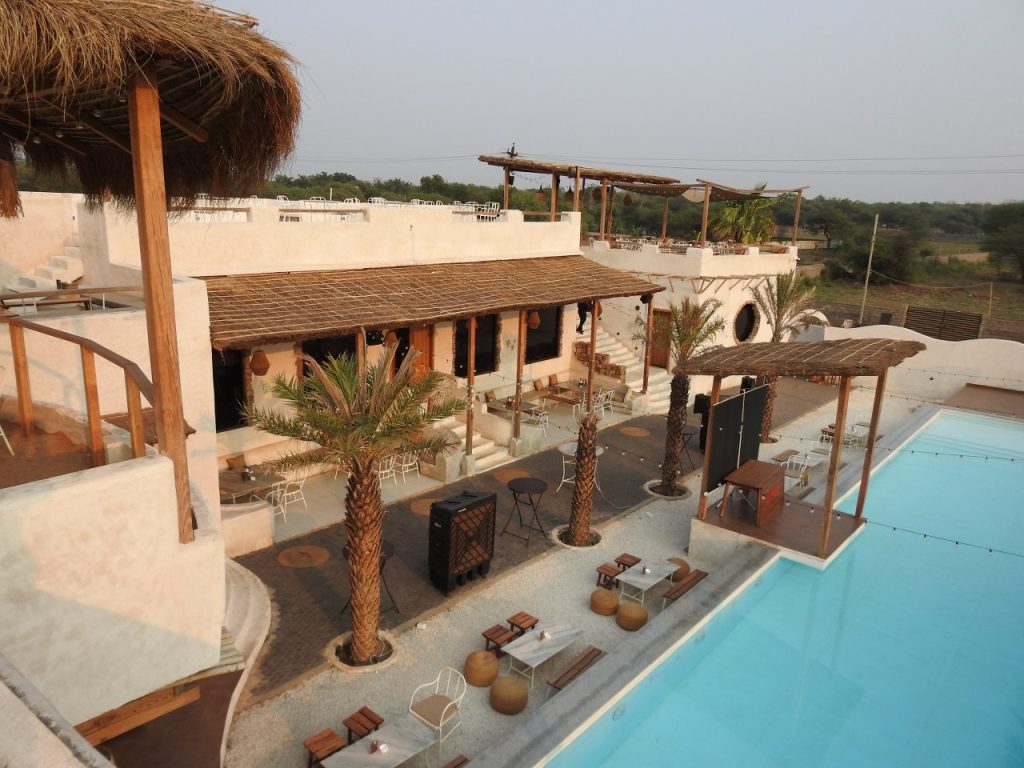
Buddha Entertainment is about creating an organic, holistic space through zero chemicals and artificial materials, where natural, untreated materials let the space breathe, resulting in users enjoying a healthier, insulated lifestyle.
Best Uses:
- Health-conscious residential and hospitality designs
- Sustainable interiors with organic, untreated wood, natural stone, and clay
- Eco-friendly offices or wellness centers
25. Fly Ash Bricks
Fly ash bricks are environmental alternatives to conventional clay bricks. They are made from fly ash which is a by-product of burning coal, it is even lighter, stronger, and more durable as compared to the usual clay bricks in use. It also reduces the demand for clay mining; hence it is sustainable in building material and construction.
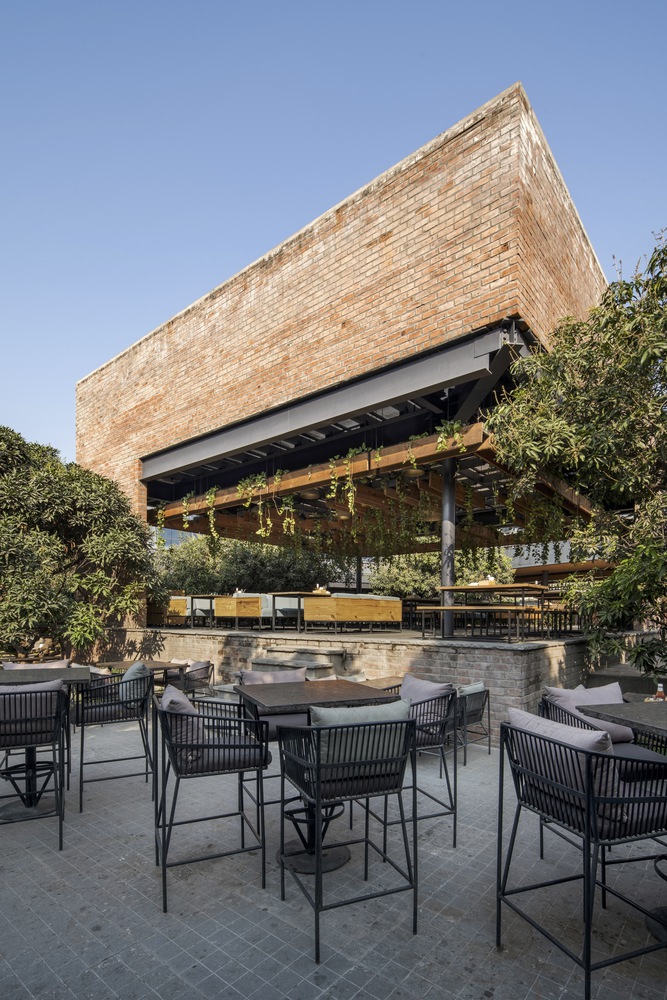
23 Degrees Design Shift uses fly ash bricks in its design to create a sustainable and pleasingly beautiful structure. This well-blended brewery adds warmth to its orchard setting and so does its contribution of fly ash bricks to the environmental efficiency of the building itself which will greatly minimize the carbon footprint of the project.
Best Uses:
- Low-cost, durable brickwork for residential and commercial buildings
- Facades and walls where sustainability is a priority
- Structures in areas requiring high thermal insulation and durability
Conclusion
A project’s durability, aesthetics, and sustainability are strongly influenced by the selection of building materials. Concrete provides strength, bamboo states earthly concerns, glass enunciates modern elegance-the purposeful choice of any material improves utility and design. The integration of the 25 materials discussed is the basis for creating timeless, inventive, and environmentally sustainable spaces designed by architects and designers.
Content Writing and Research: Juhi Goyal
